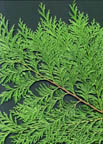Regarding Thermodynamics and Heat Transfer
Wiese, Chuck (2011) Regarding Thermodynamics and Heat Transfer. Weatherwise Inc. Portland, Oregon.
Full text [here]
Selected excerpts [here]
Large Variations in Southern Hemisphere Biomass Burning During the Last 650 Years
Wang, Z., J. Chappellaz, K. Park, and J. E. Mak. 2010. Large Variations in Southern Hemisphere Biomass Burning During the Last 650 Years. Science Express 2 December 2010.
Full text [here]
Selected excerpts [here]
Changes in Snowfall in the Southern Sierra Nevada of California Since 1916
Christy, John R. and Justin J. Hnilo. 2010. Changes in Snowfall in the Southern Sierra Nevada of California Since 1916. Energy & Environment, Vol. 21, No. 3, 2010
Full text [here]
Selected excerpts [here]
Holocene Climates Paleobotany and Paleoclimatology Pre-Holocene Climates
by admin
Comments Off
Empirical Evidence for a Celestial Origin of the Climate Oscillations and Its Implications
Scafetta, Nicola. 2010. Empirical Evidence for a Celestial Origin of the Climate Oscillations and Its Implications. Journal of Atmospheric and Solar-Terrestrial Physics(2010),doi:10.1016/j.jastp.2010.04.01
Full text [here]
Selected excerpts [here]
The Anthropogenic Greenhouse Era Began Thousands of Years Ago
Ruddiman, William F. 2003. The Anthropogenic Greenhouse Era Began Thousands of Years Ago. Climatic Change 61: 261–293.
Full text [here]
Selected excerpts [here]
Pre-industrial CO2 levels were about the same as today
Ball, Tim. 2008. Pre-industrial CO2 levels were about the same as today — How and why we are told otherwise. Canada Free Press, December 10, 2008
Full text [here]
Global Cooling Is Here! Evidence for Predicting Global Cooling For the Next Three Decades
Easterbrook, Don J*. 2008. Global Cooling Is Here! Evidence for Predicting Global Cooling For the Next Three Decades
*Dept. of Geology, Western Washington University, Bellingham, WA
Full text [here] (660 KB)
Selected excerpts [here]
Reconstructing Climatic and Environmental Changes of the Past 1000 Years: A Reappraisal
Soon, Willie, Sallie Baliunas, Craig Idso, Sherwood Idso, and David R. Legates. 2003. Reconstructing Climatic and Environmental Changes of the Past 1000 Years: A Reappraisal. Energy & Environment, Vol. 14, Nos. 2 & 3, 2003.
Full text [here] (927 KB)
Selected excerpts [here]
Solar Cycle 24: Implications for the United States
Archibald, David. 2008. Solar Cycle 24: Implications for the United States. International Conference on Climate Change March, 2008.
Full text [here]
Selected excerpts [here]
Nature, Not Human Activity, Rules the Climate
Singer, S. Fred, ed., Nature, Not Human Activity, Rules the Climate: Summary for Policymakers of the Report of the Nongovernmental International Panel on Climate Change, Chicago, IL: The Heartland Institute, 2008.
Full text [here] (4,343 KB)
Selected excerpts [here]
A geochronological approach to understanding the role of solar activity on Holocene glacier length variability in the Swiss Alps
Hormes, A., Beer, J. and Schlüchter, C., 2006. A geochronological approach to understanding the role of solar activity on Holocene glacier length variability in the Swiss Alps. Geogr. Ann., 88 A (4): 281–294.
Review [here]
Holocene Temperatures and Sea Level Changes
Taylor, George H. Holocene Temperatures and Sea Level Changes. Western Institute for Study of the Environment, December, 2007
George H. Taylor is a Certified Consulting Meteorologist and Director of the Oregon Climate Service, Oregon State University.
Full text [here]
Excerpts [here]
After the Ice Age: The Return of Life to Glaciated North America
Pielou, E.C., 1991. Univ. Chicago Press.
Dr. Pielou holds Ph.D. and D.Sc. degrees from the University of London. She has been a professor at the Yale School of Forestry, Dalhousie University, Halifax, and the University of Lethbridge, Alberta, as well as holding a variety of guest lectureship positions. In 1984 she was awarded the Lawson Medal of the Canadian Botanical Association and in 1986 she won the Eminent Ecologist Award of the Ecological Society of America. The ESA has also established the E.C. Pielou Award, a competitive award made annually to a graduate student or recent Ph.D. graduate based on overall quality of the student’s scientific contribution to statistical ecology.
Dr. E. C. Pielou is widely credited for inventing mathematical ecology. Mathematical ecology involves the quantification and statistical analysis of natural phenomena. Dr. Pielou’s book, Introduction to Mathematical Ecology (1969), ushered in that scientific discipline.
In After the Ice Age, Dr. Pielou describes the ecological changes that have occurred in North America over the last 20,000 years, our geologically brief respite from the Ice Ages, and the growing neoglaciation taking place in the Holocene.
Review [here]
Ice Ages: Solving the Mystery
Imbrie, John and Katherine Palmer Imbrie. 1986. Harvard University Press.
One of the founders of modern paleooceanography, John Imbrie is (2004) the Henry L. Doherty Professor of Oceanography Emeritus at Brown. In addition to more than 60 articles in scientific journals dealing with the Earth’s past climate, Imbrie has published four books, including Ice Ages: Solving the Mystery, which he wrote with his daughter Katherine, and which won the 1976 Phi Beta Kappa prize.
Dr. Imbrie was elected to the National Academy of Sciences in 1978, and in 1981 was awarded a MacArthur Foundation Prize Fellowship. He is a fellow of the Geological Society of America, the American Philosophical Society, the American Meteorological Society and the American Academy of Arts and Sciences. In addition to the Vetlesen Prize, Imbrie was honored with the American Geophysical Union’s Maurice Ewing Medal in 1986, the Lyell Medal for Geology of the Geological Society of London in 1991, the Vega Medal of the Swedish Society of Anthropology and Geography in 1999, and the Milankovic Medal in 2003.
John Imbrie was a member of the team that vindicated the work of Milutin Milankovic by demonstrating that changes in the geometry of the Earth-Sun system did indeed pace the glacial cycles of the Pleistocene.
Review [here]
